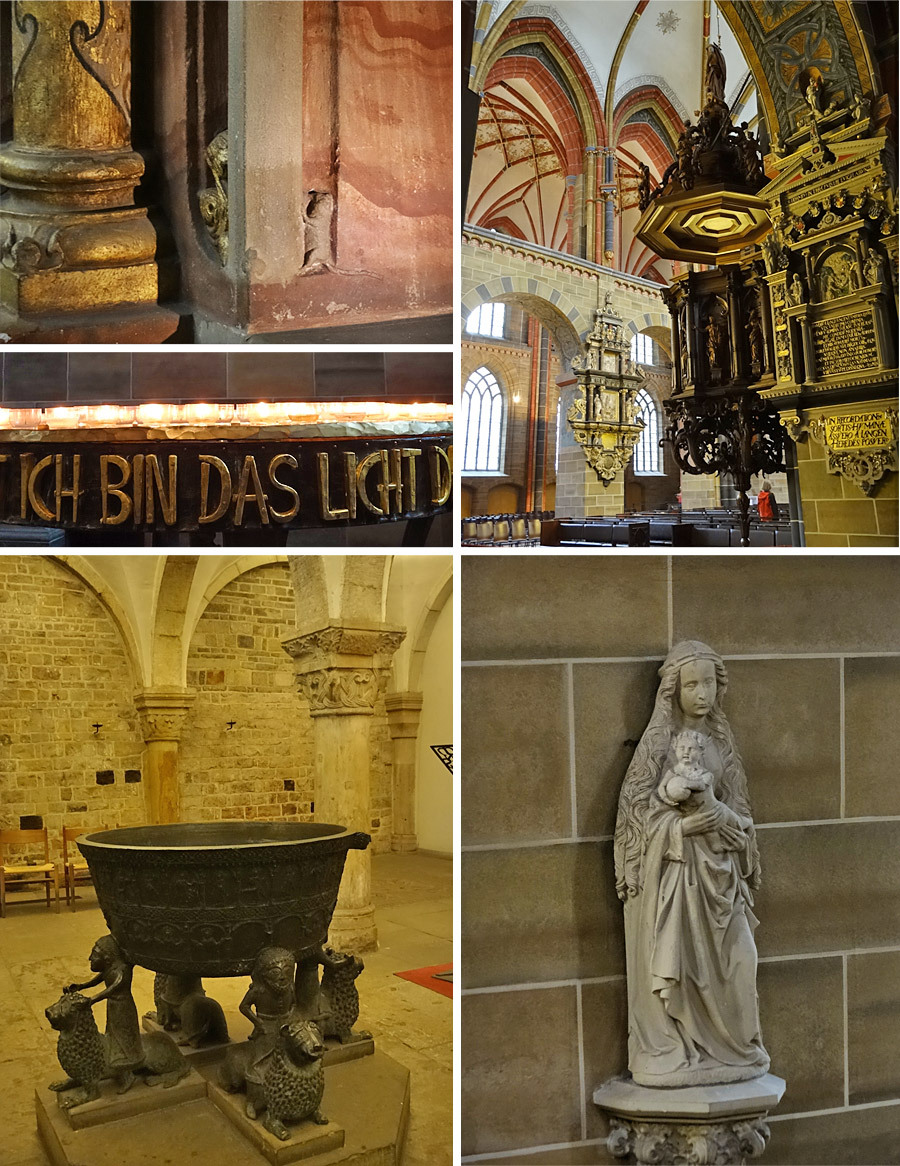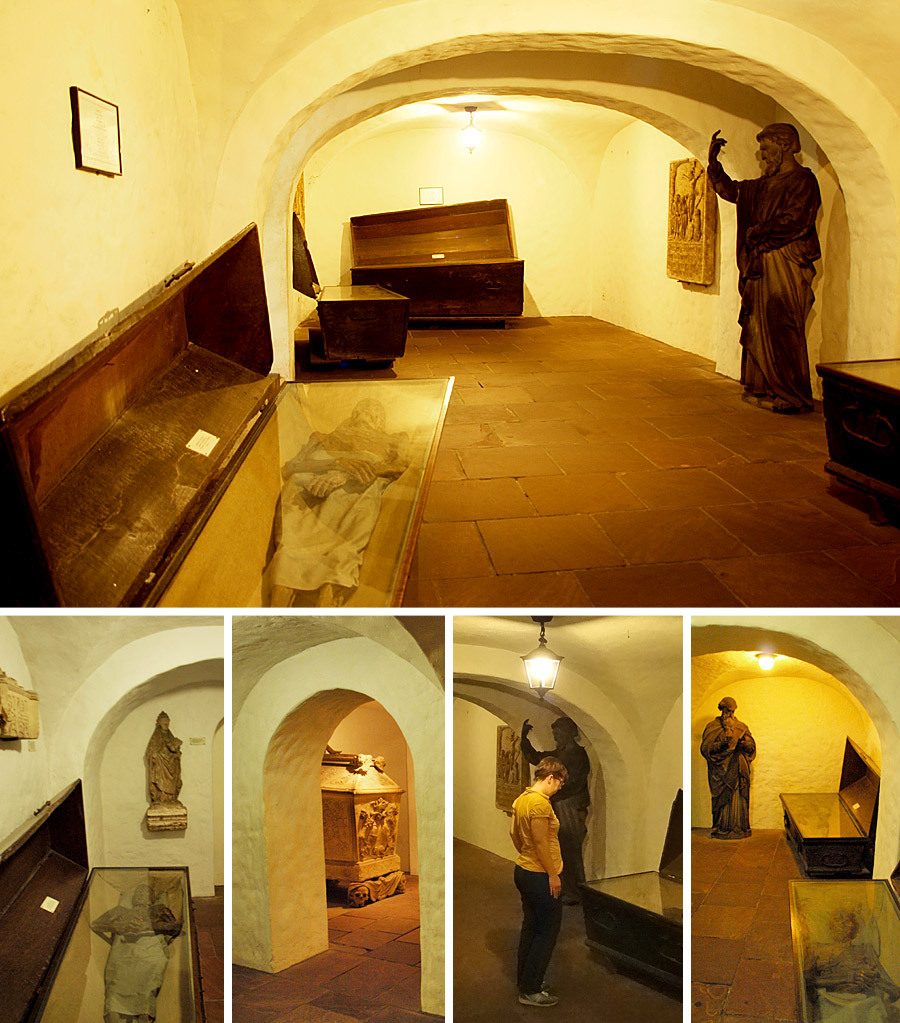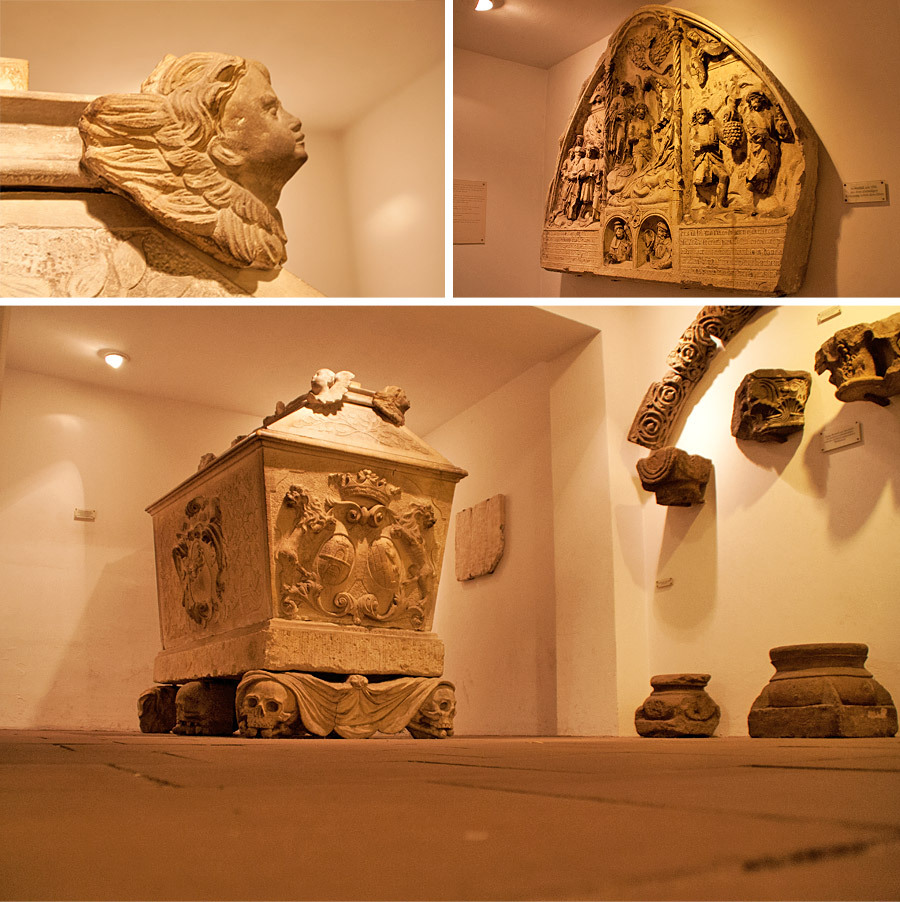The Bleikeller – home of the cathedral mummies
Tourism
Life comes to an end eventually. Visitors to the Bleikeller lead cellar, probably Bremen’s most enigmatic attraction, know this only too well. I joined my colleague Carolin on a journey through life and death in St Peter’s Cathedral.
St Peter’s Cathedral – a place of life
Life and death are often found side by side, and never more so than underground in the cathedral.
In Bremen’s oldest room, the Protestant cathedral’s Romanesque western crypt dating back to 1066, there is a bronze baptismal font held aloft by four riders sitting astride lions. Life – the beginning of an exciting and unknown journey – is celebrated here through baptism.

St Peter’s Cathedral is always well worth a visit – it’s a site of history and faith, of art and tranquillity. There is a wealth of information on the cathedral website, especially about the cathedral museum. Families with children can go on a hunt for the cathedral mouse or climb the tower to get great views of the market square below.
But most of all, it’s a place for people, set in the vibrant centre of the city, and a venue for wonderful concerts. And a place of the dead, of course.

St Peter’s Cathedral – a place of the dead
One of the people interred here is Bishop Willehad, who consecrated the wooden cathedral in 789. He also gave his name to Willehad market, which was later renamed and continues as the Freimarkt festival to this day. But the best-known person, at least in Germany, must be Baron Knigge. He is most famous as the author of On Human Relations, a sociological and philosophical treatise that somehow became synonymous with politeness and etiquette. But you won’t find either in the Bleikeller.
To reach it, we leave the cathedral and walk next door through the iron gates of Bibelgarten garden, where we’re greeted by the figure of a pilgrim. Bibelgarten, situated in the former cloisters, is a real oasis featuring more than 60 species of plants that are mentioned in the Bible. And a fountain provides refreshment – simply delightful!

From here you go down into the Bleikeller. The mummies were only discovered by chance in 1698 by apprentices of organ builder Arp Schnitger. The bodies had dried out naturally and become mummified, as the process of desiccation had started before decomposition could set in. The name Bleikeller, or lead cellar, stems from the fact that lead was stored in the eastern crypt (known today as the Room of Tranquillity), though this did not cause or affect the mummification. In 1822, the eastern crypt was rented out and the mummies were moved to a Gothic chapel that had been used as a coal cellar. In the 1970s, the cathedral museum was established in the chapel, and since 1984 the mummies have been on show in a side room of the cathedral.

So, who are the dead?
- Georg Bernhard von Engelbrechten, chancellor of the duchies of Bremen-Verden working for the Swedish crown, 1658-1730. He was originally interred in a large stone sarcophagus, which is also on display. At the beginning of the 19th century, he was moved from the ornate sarcophagus to an open wooden coffin, disguised as an English officer. His wife was disguised as a Swedish countess. This only came to light in the 1960s, when the sarcophagus split at one end and only a note was found within confessing to the ‘theft’.
- Maria von Engelbrechten, née von Mevius, wife of chancellor Bernhard von Engelbrechten, died 1734.
- Supposedly Lady Stanhope, but the name is not certain, as at the time the family had not reported any deaths. At the beginning of the 18th century she was described as the ‘English countess’.
- Conrad Ehlers, day labourer, died in 1788 at the age of 80. He was the last person to be buried in the Bleikeller. During his final years, he was permitted to stay for free in the cathedral’s monastery on the condition that he agree to being buried in the Bleikeller.
- An officer or soldier, likely to have died from a gunshot wound suffered during the Thirty Years’ War. Because his mouth is open wide as if to scream, he was originally thought to be a roofer who had fallen to his death.
- Oberst von Winsen, an officer from Pommerania working for the Swedish crown, died sometime after 1652.
- Kornett, officer working for the Swedish crown, probably died of injuries suffered in an explosion.
- A student, supposedly stabbed to death in 1705 in a duel, based on the injuries to his arm.
Goethe and the Bleikeller
There is an odd story that a doctor from Bremen, who was a friend of Goethe, gave him a finger and a child’s hand from the Bleikeller in the hope of enticing him to visit Bremen. These relics are on show in Goethe’s House in Weimar. The hand is probably that of a child from an aristocratic family. The children were moved from the Bleikeller to local church cemeteries after 1823. Until the mummies were covered with glass in 1968, hair and fingers were probably taken as souvenirs – at least that’s what Wikipedia (in German) tells us. My blood runs cold just thinking about it.

The Bleikeller is a special place
It’s important to the cathedral administrators that the peace of the dead is disturbed as little as possible, but of course the mummies are also important reminders of history for the public. I think the delicate balancing act has been a success. During our tour, visitors are very quiet and respectful while looking at the mummies and the catacombs. However, I do think that children shouldn’t be too young or too easily scared, and the topic of death should be raised beforehand. By the way, the mummified cat and monkey that are often written about are no longer in the Bleikeller.
The Bleikeller is not too extensive, and so is an ideal stop on a tour of the city. Admission is currently €1.40 for adults and €1.00 for children up to twelve years of age. Please note that the Bleikeller is only open between April and October.
I can highly recommend:
- A few years ago, Messe Bremen exhibition centre created a new fair called Life and Death. This should be of interest to anyone who wants to explore this topic further.
- St Peter’s Cathedral is the venue for many excellent events. Visit the events calendar to see what´s up next. (only in German)
Success Stories
Science plays a leading role in Bremen: in the laboratories of the university, at one of the more than 50 research institutes or in the green botanika. There are many opportunities for visitors to experience science at first hand.
Learn moreAccording to recent statistics, the Hanseatic city of Bremen is Germany's greenest big city, with 60 square metres of green space per inhabitant. The many parks and green spaces in the city include world-class spaces, such as the Bürgerpark and the Rhododendron park, both of which are of German and even world renown. By its own account, Bremen is home to the world's largest collection of rhododendrons. Let's take a walk.
Learn moreThe greenest major city in Germany is Bremen - with an average of 60 square metres of sports, leisure and recreation space per person. Parks, sports facilities, but also water areas invite you to relax from the hustle and bustle of the city every day.
Learn more